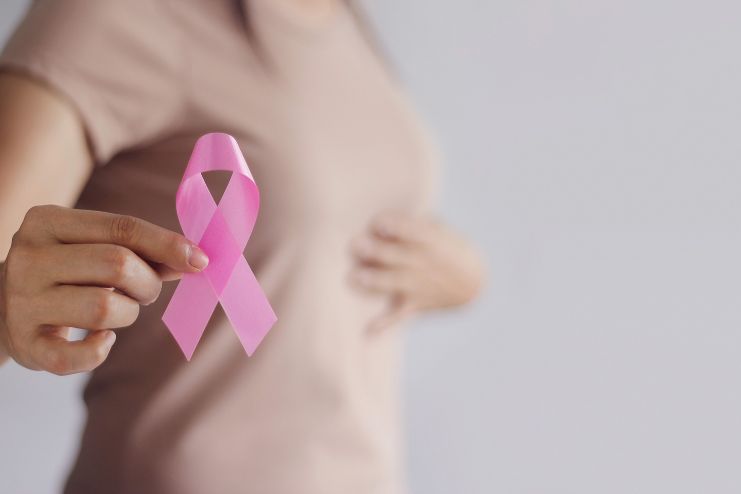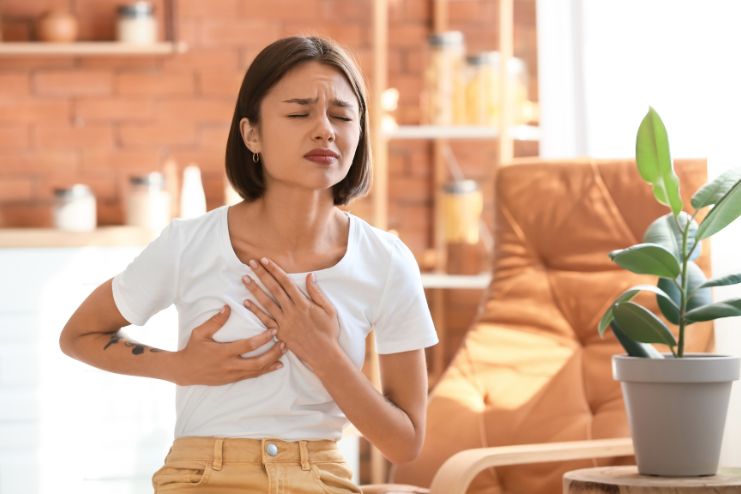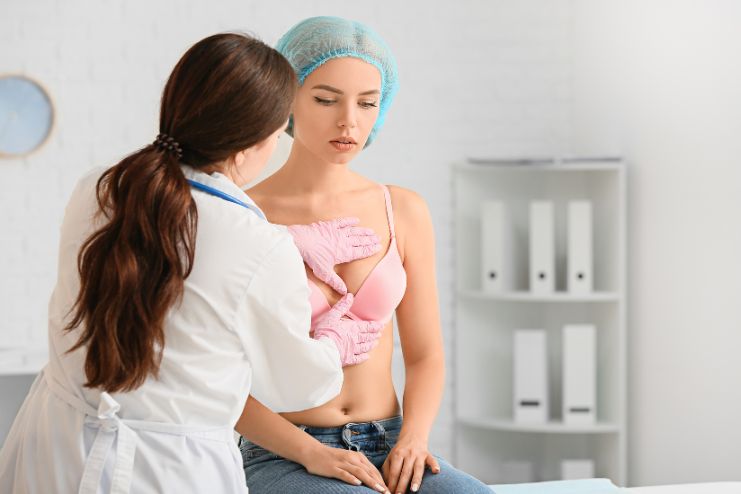Affiliate Disclaimer
Some links in this article are affiliate links. We may earn a small commission if you make a purchase through these links, at no extra cost to you. We only recommend products we find useful to our readersDid you know that 1 in 9 women will get diagnosed with breast cancer in their lifetime? The key to survival is early detection. Recognizing the early signs of breast cancer can significantly improve the chances of successful treatment and recovery. It’s essential to pay attention to any changes in your body since physicians can take action before the disease has progressed if they catch it early.
Although there are subtle indicators to look out for, breast cancer doesn’t always have overt symptoms, particularly in its early stages. Paying attention to these symptoms and seeking medical assistance as soon as a problem appears is crucial because early detection can save lives.
In addition to detecting symptoms, understanding the risk factors like family history, age, and lifestyle choices can help you take any proactive action to reduce your risk. Stay aware, stay watchful, and prioritize your health!
Read More: Environment and Cancer Risk: Simple Home Changes for Health
What Is Breast Cancer?
When breast cells in the lobules, ducts, or surrounding connective tissue start to grow abnormally, it’s known as breast cancer. These cells divide quickly, resulting in a breast lump or mass that develops and occasionally spreads to lymph nodes, blood arteries, or other body parts.
Although it usually affects women 50 years of age and older, breast cancer can sometimes strike people under 50. Although it is more frequent in women, men can still get breast cancer.
9 Warning Signs of Breast Cancer

As we mentioned before, recognizing the early signs can be helpful for several women who have been suffering from the condition without knowing about it.
It is essential that you keep things into consideration, and some of them are what we are going to suggest for you below:
1. Pain in the Breasts
A tumor may induce pain if it presses onto adjacent healthy tissue, even though pain is not a very common symptom of early breast cancer. One of the earliest signs of inflammatory breast cancer is frequent pain and tenderness. The skin surrounding the breast becomes red simply due to this uncommon form of cancer, which tends to spread swiftly.
Early indications of Paget disease of the nipple, a rare type of breast cancer, include nipple inflammation, pain, and burning.
See your doctor right away if your breast discomfort is growing worse, and you don’t know why.
2. Swelling of the Breasts
Hormonal fluctuations frequently cause breast enlargement during your menstrual cycle, which is normal. However, breast cancer may be the cause if you observe unusual swelling in one or both breasts that doesn’t appear to go away.
Do not disregard persistent swelling, even if there isn’t a noticeable lump. Your doctor should assess it to avoid dangerous conditions and guarantee prompt care.
Read More: Cancer-Fighting Recipes: Nutrient-Packed Meals for Wellness
3. Dimpling, Skin Irritation, or Other Changes to the Skin
Unusual changes to the surface of the breast and/or areola are another early warning sign of breast cancer. Symptoms include chronic irritation, itching, dimpling, redness, scaliness, and skin thickness.
These alterations, occasionally having an orange peel-like look, may be a sign of cancer and should be promptly evaluated by a healthcare professional. If you observe these changes, you must speak with your healthcare physician for a comprehensive assessment and potential screening.
4. Lumps in the Breast
Finding a new lump or mass in the breast might be the first sign of breast cancer. It’s crucial for a healthcare professional to examine any new mass, even though many lumps are benign and harmless. A breast lump is more likely to be malignant if it is firm, painless, and has uneven edges.
It’s crucial to remember that malignant lumps can also seem spherical, soft, and painful, so you should get medical help if you see any strange changes in your breast tissue. Early identification can significantly alter the result.
Read More: Best Foods to Eat for Cervical Cancer Prevention
5. Angiogenesis
The process by which the body produces new blood vessels to provide tissues with oxygen and nutrients is known as angiogenesis. When angiogenesis takes place in the breasts, the body may be trying to create a new blood supply for growing breast cancers. This may be an early warning indication of breast cancer.
However, regular physical examinations cannot identify angiogenesis; instead, specialist thermography testing that can record heat patterns linked to abnormal blood vessel formation in the breasts is required.
6. Changes in the Nipple and Areola
Notable alterations in the nipple and areola can also result from breast cancer. Retraction is an abnormal alteration in which the nipples bend inward. Furthermore, there may be redness, scaling, thickening, or skin irritation surrounding the nipple and areola. A healthcare professional should assess these developments.
Read More: How to Identify Cancerous Moles: Signs You Shouldn’t Ignore
7. Nipple Discharge
Excessive breast discharge during nursing is abnormal and may indicate a medical issue, so doctors should treat it carefully. Any unusual discharge could be an indication of breast cancer, mainly if it happens in one breast, is spontaneous, or is bloody.
Your healthcare professional should evaluate any clear or milky discharge unrelated to breastfeeding or pregnancy. To identify the reason and rule out any dangerous illnesses, including cancer, prompt medical attention is crucial.
8. Redness or Hot feeling
Redness around the breast is often a ubiquitous sign of breast cancer. Don’t necessarily get diverted thinking that this is the sole indicative sign.
If the redness is accompanied by a feeling of hotness, it is better to see a doctor before it gets worse.
It is often a sign of inflammatory breast cancer—it is essential to keep an eye out for the condition all the more. Don’t just forego the condition of the skin rashes. But also, the scaly skin as something normal if it is persistent.
Read More: Understanding Pancreatic Cancer: Symptoms, Diagnosis, and Staging
9. Stretched out skin
Yet another one of the possible symptoms of breast cancer is the presence of stretched-out skin. It is essential to ensure that you look out for the texture of your skin, too.
Suppose the skin around the breast seems to have a lot of stretch marks. It is possible that the same could very well be because of the early signs of breast cancer.
Take care at the Early stage because it helps you treat the condition.
Breast Cancer Risk Factors

Everybody wants to know how to reduce their risk of developing breast cancer. While there are characteristics associated with a higher-than-average chance of acquiring breast cancer, the exact cause of the disease is unknown. Specific characteristics, such as being a woman, your age, and your genetic makeup, are unchangeable and are linked to a kind of increased risk of breast cancer. Lifestyle decisions can change other factors, such as eating specific foods, smoking cigarettes, and not exercising. Known risk factors for breast cancer include:
- As people age, they face a higher risk of developing breast cancer. Doctors discover most cases after the age of fifty.
- Inherited abnormalities in specific genes, such as BRCA1 and BRCA2, increase the risk of ovarian and breast cancer.
- Women are more likely to get breast cancer if they have close relatives with the disease, particularly moms, daughters, or sisters.
- Breast cancer risk factors include early menstruation (before age 12), late menopause (beyond age 55), having your first child later in life, or never having given birth.
- The risk of developing breast cancer again is higher for those who have already had it. Two noncancerous breast conditions, atypical ductal hyperplasia and lobular carcinoma in situ, increase the risk of developing breast cancer.
- Women who received radiation therapy to the breasts or chest before the age of thirty (for example, to treat Hodgkin’s lymphoma) are at an increased risk of developing breast cancer in the future.
- You may be more susceptible to breast cancer if you have been diagnosed with any of the benign (not cancerous) breast disorders.
- Particularly after menopause, women who are overweight or obese are more likely to receive a breast cancer diagnosis than those who maintain a healthy weight.
Read More: 9 Daily Habits That May Reduce Cancer Risk
When To See a Doctor?

Regular screenings and self-examinations are vital since early detection is very critical in the fight against breast cancer. Don’t disregard any odd changes you observe in your breasts; instead, make an appointment with your physician right away. Clinical breast exams and routine mammograms can help identify problems before symptoms, improving the likelihood of a favorable outcome.
Some signs call for immediate medical care. A new or developing breast or underarm lump, persistent swelling, unexplained nipple discharge (particularly bloody), changes in nipple position, or skin changes like thickening, dimpling, or redness are some examples. If you have ongoing breast pain unrelated to your monthly cycle or sudden heat and swelling in your breast, see a doctor right away.
Don’t delay; your health comes first. Consult a medical expert if you observe anything unusual because early diagnosis can save lives.
Read More: 10 Causes of Vaginal Cancer
Conclusion
Early detection can make all the difference in your breast cancer, and your health is extremely valuable. Recognizing early warning symptoms and acting quickly increases the chances of successful treatment. Protecting oneself requires regular screenings, self-examinations, and medical consultation for odd changes.
Don’t disregard any possible red flags. If you ignore a minor symptom today, it could become a more significant issue. By putting your health first, you give yourself the confidence to take charge and get help from a doctor when necessary. Keep in mind that early detection is the most effective way to treat breast cancer.
Seek medical attention right away if you have any of these symptoms. Early detection saves lives! Every second matters for your loved ones’ health, so encourage them to be proactive and knowledgeable. For a healthier tomorrow, take action now!
-
July 2020Written by Somapika D
-
Apr 2025Edited by Ankita
References
- https://www.cancer.org/cancer/types/breast-cancer/about/what-is-breast-cancer.html
- https://my.clevelandclinic.org/health/diseases/3986-breast-cancer
- https://www.pennmedicine.org/cancer/types-of-cancer/breast-cancer
- https://www.bcrf.org/about-breast-cancer/signs-of-breast-cancer/
- https://www.cancercenter.com/cancer-types/breast-cancer/symptoms
- https://www.breastcancer.org/signs-symptoms
- https://www.komen.org/breast-cancer/signs-symptoms/warning-signs/
- https://www.cdc.gov/breast-cancer/risk-factors/index.html
- https://www.breastcancer.org/risk/risk-factors
- https://www.nationalbreastcancer.org/breast-cancer-risk-factors/
In this Article


















